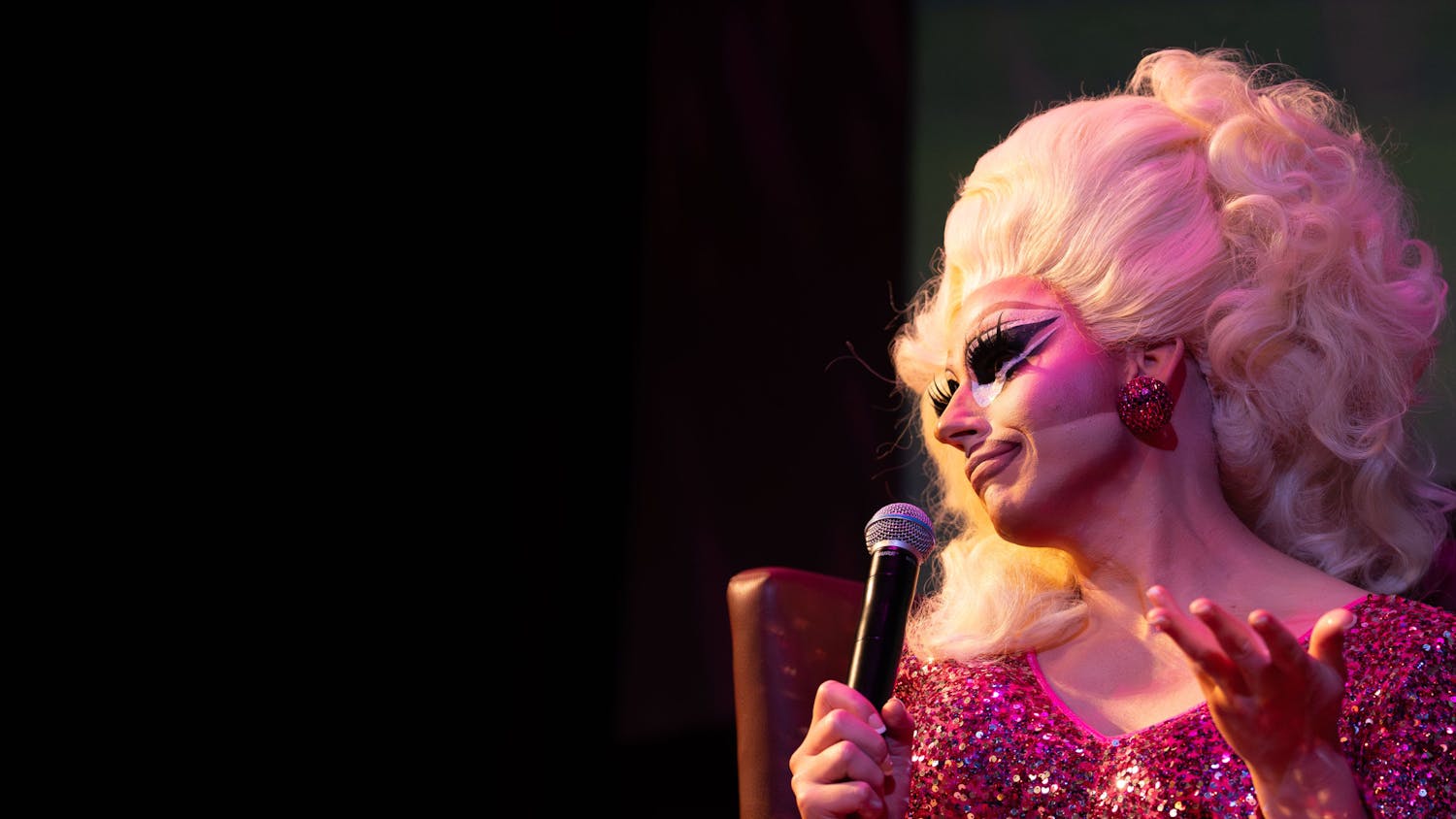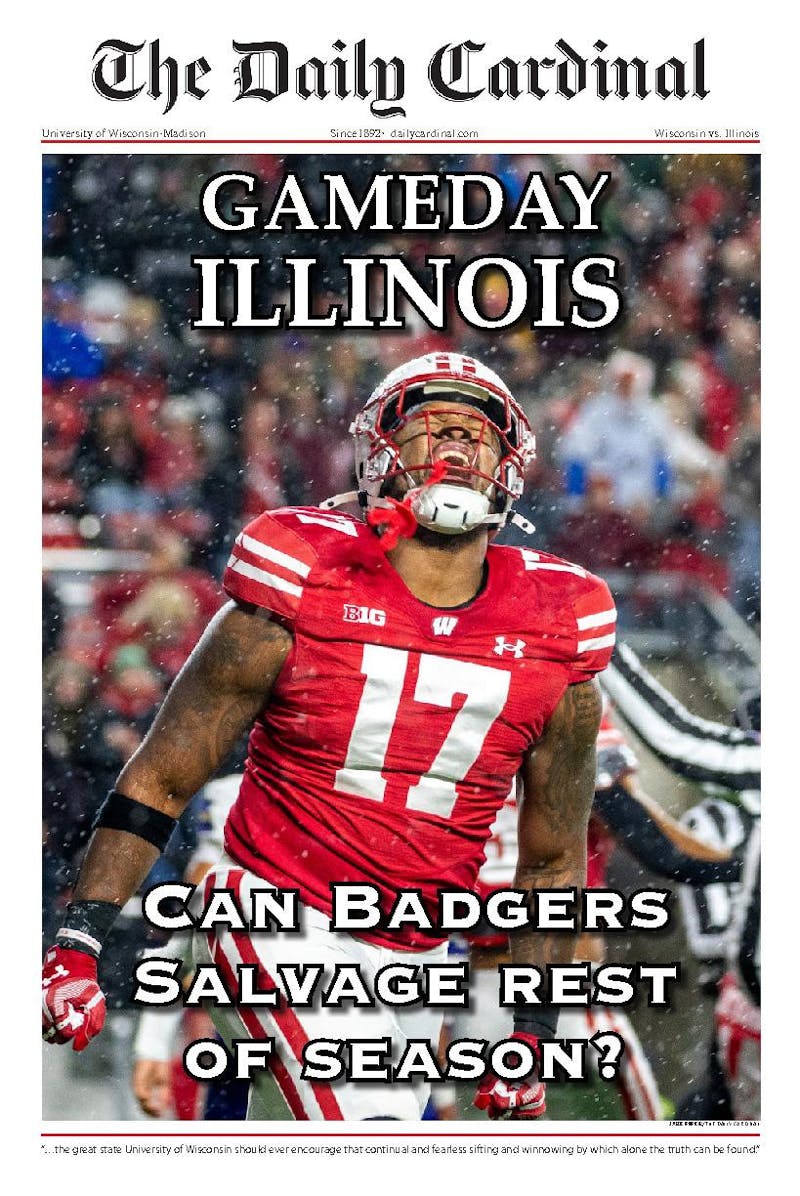Luis Rodriguez tells parables from a livelier land in \The Republic of East L.A."" He takes us to the barren places on the edge of the City of Angels to bring this short story collection to its fleshed-out completion. From the dozen stories emerges a place of low-riding Cadillacs, women dancing with watermelons and enough honesty to make East L.A. as real as the book's pages.
The stories move quickly, like the cars on the freeways, roaring toward the mountains or the ocean. The people who populate ""The Republic of East L.A."" seem to ""lay like diamonds on a garbage-strewn lot."" They are vividly realized and artistically rendered to tie their lives to the neighborhood.
The Daily Cardinal had the honor of speaking with Mr. Rodriguez.
The Daily Cardinal: Why is there such a car culture in East L.A.?
Luis Rodriguez: It's probably because of the way the city of L.A. is situated. I think what the Mexican community had done, as a lot of people in California had done, was reconstructing the cars; painting them and making them hot rods and low-riders. Low-riding was the way a lot of the Chicano population started to do this. They would lower the cars and put hydraulics on them. They would set them up so they could dance on the road. There were elaborate and intricate paintings; the interiors were done up very fancy and unique. That became a cultural expression.
DC: How much has TELACU [The East Los Angeles Community Union] affected the economic and social climate in East L.A.?
LR: They're pretty well known, but I don't know any particulars about exactly what their development projects have been. East L.A. has had a lot of development over the last 20, 30 years. But it still, unfortunately, remains a very poor area, one of the poorest in all of L.A. county. It doesn't really have any ""middle class"" communities. Businesses like stores and grocery markets have popped up. What I find missing are bookstores. There are no bookstores in East L.A.; little, small bookstores and art galleries too. Some areas have art galleries but that is a very new phenomenon. There's a lot of cultural things that haven't happened in
East L.A. the way you would think for the large number of people who are there. I think what's missing in development is strong cultural, community books and intellectual-type cultural expressions'or even media, like TV studios. It's one of those things that makes you wonder how development is happening.
DC: I was reading about your bookstore-art gallery-coffee shop and half a dozen other things, the Tia Chucha Caf??.
LR: I started that because a lot of these areas are culturally barren. My bookstore is not in East L.A. It's in another very large Mexican community in the north San Fernando Valley. It was the same situation where there's 400,000 people here and there are literally no bookstores, no movie houses and no cultural centers. I think that happens a lot in these kind of communities. Strangely, in the entertainment and media capital of the world you have whole areas that don't even have a movie house.
DC: Is the bookstore taking off?
LR: The bookstore is doing very good because people are hungry for it. It's a very hard business to set up but people, especially young people, gravitate toward it because there's really nothing quite like it. You can't expect to make any money on it. You just have to do it because you care and the community needs it.
DC: What do you make of the surge of gang violence in East L.A. in the past year?
LR: I think the economy is probably the best barometer to figure out why the gangs rise up more than other times. I think when the economy gets worse people respond with violence or robberies or organized gang activities. But I think that's the situation because it's up and down all the time and hopefully it goes down again. But I think what has to happen is that people have to look at the root causes, because it will keep going up and down if you're not looking at why it is that the economy or even some of the social issues impact the community the way they do.
DC: How much does the Chicano idea of masculinity, machismo, figure into the social climate of East L.A.?
LR: I'm trying to challenge some of the thinking of what is machismo, in relation to what a man does or doesn't do and what it is to be a man. I think what it is is an issue of working class communities. When people have to survive, men especially have to provide. Unfortunately for working class communities, when the jobs are gone and the factories are gone the women have to do more and pretty soon you have all this tension.
People say, ""How dare you be a writer? Why don't you work somewhere so you can make some money, instead of doing something that doesn't guarantee any money?"" I wanted to present those issues of how people want to break away from the mold of just sitting in a factory and would like to do something else. It tends to cause a certain amount of tension.
DC: How then do you evaluate your own position as a Chicano writer?
LR: I'm kind of saying that you can't judge a man's work by whether he works in a factory or not. I'm not against factory workers; I did it for seven years. I did all that work and I probably would have been staying there, but it wasn't for me. Some of us want to do something else. When I went to school we were actually pushed to just work in industrial arts, to just work with our hands. Nobody was encouraging anybody to go to college. I thought it was important to show that some people have to break away from those molds and are willing to do it. It's not to put down the working class; it's just to say that there are other avenues that have to be created. There are other options. For me, that's what I've done. People pretty much respect me for what I do. It's one of those things where nobody loves you when you first get into it, but then you really start getting some success in it; they start supporting you when you're getting good at it.
DC: What do you think about the efforts made by some libraries to ban your book ""Always Running?""
LR: What it was was some school boards. Libraries tend to be supportive. It ended up being school boards, which, to me is political. School boards are elected officials. Some of them use politics more than educational compasses to figure out what they're going to do. That's what I thought it was; it was just a political thing. Teachers who were using the book and librarians who had it on their shelves saw it as an educational tool. The book is very graphic and it's very real but it's also written very literally. It's written in a novelistic form, even though it's not a novel. It's a memoir, but it was written in a way that the literature and educational aspects overwhelmed any of the graphic scenes. But again, the politics in education are kind of crazy right now. A lot of policies are being instituted having to do with how to educate people.
DC: What are your plans for writing and community work?
LR: I'm going to continue with the Tia Chucha Caf??. That's taking a lot of time because it's a very important effort. We're bringing in a lot of youth. We have workshops for youth, teenagers and kids. We're going to have a lot of events there. But I'm also going to keep writing. I have some ideas for a couple of novels I want to do, some other nonfiction books and some children's books. A book of poetry has been slated for 2004 already. I have a CD of original music and poems coming out in May. I stay pretty busy. I'm just going to continue writing and, if I can, hopefully do another short story collection in the future.





